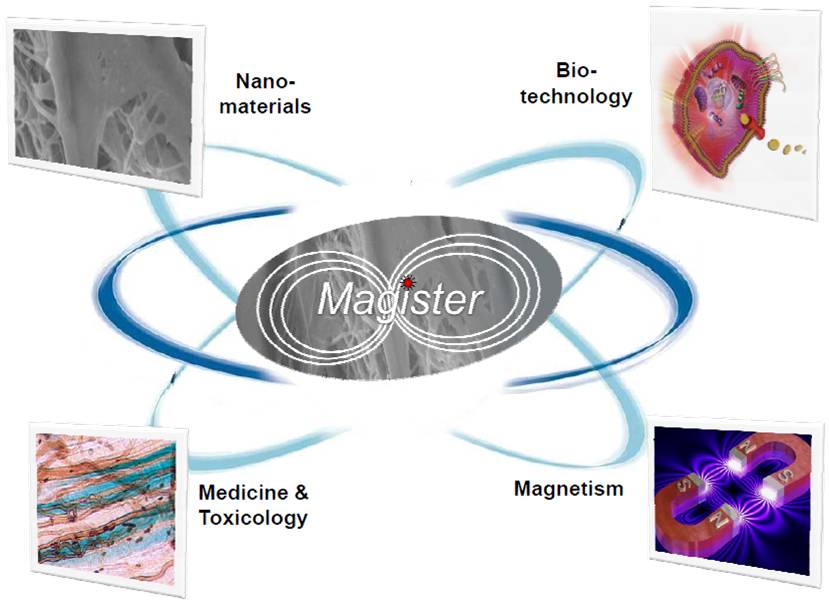Questo sito Web utilizza i cookie in modo da poterti offrire la migliore esperienza utente possibile. Le informazioni sui cookie sono memorizzate nel tuo browser e svolgono funzioni come riconoscerti quando torni sul nostro sito Web e aiutare il nostro team a capire quali sezioni del sito Web ritieni più interessanti e utili. Per maggiori informazioni consulta la nostra Privacy Policy.
MAGISTER
Magnetic scaffold for in vivo tissue engineering
Responsabile: Anna Tampieri
Personale coinvolto: Monica Sandri, Silvia Panseri
Data di inizio: 08/2008
Durata: 60 mesi
Finanziamento totale: 8.278.000 €
Azione: FP7 – NMP3-LA-2008-214685
Coordinatore: Dr. Dediu Valentin Alek (CNR-ISMN)
Consorzio: 24 partner da 8 Paesi europei e 1 Paese extra-europeo
Partner: CNR-ISTEC (IT), CNR-ISMN (IT), CNR-IMCB (IT), Alma Mater Studiorum Università di Bologna (IT), FIN-CERAMICA Faenza (IT), Ruprecht-Karlsuniversitaet Heidelberg UH (D), Universidad Politecnica De Valencia (Spain), BIO-VAC (S), S.A. BIO-VAC (S), Universidade de Santiago de Compostela (S), Forschungszentrum Rossendorf (D), Eidgenoessische Materialpruefungs- Und Forschungsanstalt (CH), The University Of Edinburgh Uedin (UK), Sveuciliste U Zagrebu, Medicinski Fakultet UniZAG HR, Universitaetsspital Basel (CH), INVENT (F), I+ (I), Biodevice Systems (Cz), Belarussian State Medical University (Belarus), Explora S.r.l. (I), AvantiCell Science Ltd (UK), Central Institute of Orthopedics and Traumatology of Russia (Russia), University of Brighton (UK)

The main driving idea of the project is the creation of conceptually new type of scaffolds able to be manipulated in situ by means of magnetic forces. This approach is expected to generate scaffolds with such characteristics as multiple use and possibly multipurpose delivery in order to repair large bone defects and ostheocondral lesions in the articular surface of the skeletal system. The major limitations of the scaffolds for bone and cartilage regeneration nowadays available in the market are related to the difficulties in controlling cell differentiation and angiogenesis processes and to obtain stable scaffold implantation in the pathological site. Several attempts have been performed over the last years in order to provide scaffolds for tissue engineering, but nowadays there is no way to grant that tissue regeneration take place in the pathological site.
The provision in vivo of the scaffold with staminal cells or /and growth factors in order to drive the tissue differentiation process and parallel angiogenesis represents nowadays one of most challenging requests [Ref. Nanomedicine roadmap]. The Consortium aims to elaborate, investigate and fabricate new kind of scaffolds magnetic scaffolds (MagS) – characterized by strongly enhanced control and efficiency of the tissue regeneration and angiogenic processes. The magnetic moment of the scaffolds enables them with a fascinating possibility of being continuously controlled and reloaded from external supervising centre with all needed scaffold materials and various active factors (AF). Such a magnetic scaffold can be imagined as a fixed station that offers a long-living assistance to the tissue engineering, providing thus a unique possibility to adjust the scaffold activity to the personal needs of the patient.
